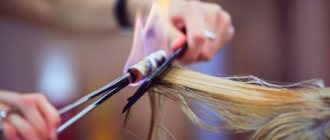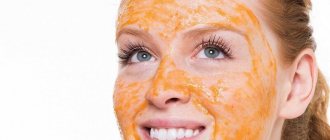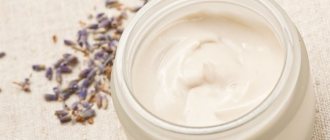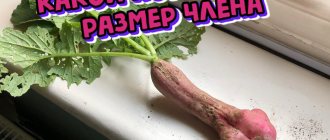Causes of dry skin on the feet, cracks
Everyone knows that the appearance of the epidermis reflects the internal state of the body. Dry foot skin is an indicator of many problems. This is not just a cosmetic flaw. There are many reasons for the appearance of dryness and flaking - from the characteristics of the body to diseases. Thus, tightness and cracks in the skin of the legs can be caused by:
- External exposure: due to walking on hot sand at the beach or staying indoors with extremely dry air, as well as open sandals in summer.
- Wearing tight, comfortable shoes, which impairs blood circulation in the tissues.
- Constant contact with detergents containing a lot of alkali.
- Too tight and thick socks, tights, leggings.
- As a result of being in the cold, when blood circulation is again impaired.
- Frequent hair removal, especially without subsequent moisturizing and treating the skin.
- Hard and chlorinated tap water.
- Over 40 years of age, as gradually the amount of hyaluronic acid, elastin and collagen is produced less and less. The skin becomes thinner and cannot moisturize on its own.
- Diabetes mellitus.
- Skin diseases such as psoriasis, dermatitis, eczema.
- Deficiency of vitamins and microelements.
- Disturbances in the functioning of the thyroid gland.
- Metabolic disorders.
Of course, you shouldn’t panic and think that dry skin on your feet indicates serious illness. Each ailment has a number of direct signs, and tightness of the epidermis on the legs can act as an additional symptom or as a consequence. On the other hand, it is worth thinking about the state of your health if such a problem is constantly present. It is possible that it will be possible to prevent the development of a dangerous disease at an early stage.
Cosmetology expertAlso often, dry skin on the feet is the result of a negligent attitude towards oneself and one’s appearance. This is especially true for people over 40, 45 years old. Insufficient skin care provokes violations in the integrity of the integument. The older a person gets, the more careful self-care should be. Now you can’t do without special procedures and means.
Dry skin on toes: causes
Dry skin on the toes may result from:
- wearing synthetic clothing - tights, socks made of synthetic or woolen materials serve as a strong irritant,
- tight shoes, rubber soles/boots, the use of artificial materials in the manufacture of shoes - blood circulation is impaired,
- using regular soap for foot hygiene,
- ignoring the need to moisturize the skin of the feet and toes.
Toes can actively dry out at the age of 40 years and older - this is a natural phenomenon that is associated with the aging of the epidermis and the entire body as a whole.
Dermatologists separately consider fungal diseases - most often they cause excessive dryness of the fingers on the lower extremities. This may be the first sign of a developing pathology; later other, more pronounced symptoms will be added to it.
If the skin on your legs is dry and itchy in winter
If in winter the skin on your legs becomes excessively dry and itchy, then you first need to rule out a fungal disease. Next, it’s worth reviewing the algorithms for performing hygiene procedures, because foot care continues regardless of the time of year:
- washing feet using soft gels,
- weekly skin scrubbing,
- use of moisturizing creams.
Itching on dry skin is a sign of irritation; you need to look for a provoking factor: staying indoors for a long time in winter shoes, excessive sweating of the feet, wearing low-quality shoes, synthetic socks, and so on.
Dry and itchy feet
If your feet itch and dry at any time of the year, you will need the help of a dermatologist - most likely a fungal disease will be diagnosed. You can become infected with it on the beach and in a bathhouse, swimming pool, walking barefoot on the floor, or wearing open shoes. The fungus can occur in different stages, but its symptoms most often are:
- excessive dryness of the feet and toes of the lower extremities,
- itching is often unbearable,
- the appearance of weeping lesions - especially often noted in the space between the fingers,
- the presence of small rashes,
- burning in places of increased concentration of manifestations of fungal infection.
Only antimycotic (antifungal) therapy will help solve the problem, which is selected by the doctor depending on the type of fungus affecting the patient’s skin.
Dry skin on the foot near the bone
Near the bone (the area of the first/thumb or ankle), the skin may dry out due to:
- wearing too tight, narrow shoes,
- the use of low-quality clothing made from synthetic materials,
- development of fungal diseases,
- progression of psoriasis,
- insufficient intake of vitamins into the body.
The problem can be solved by getting rid of provoking factors, at the same time taking vitamin complexes and carrying out hygienic and caring procedures strictly in accordance with the recommendations of a dermatologist.
Dry skin anywhere on the legs can be associated with poor nutrition - too strict a diet or, on the contrary, eating only harmful foods leads to metabolic disorders; insufficient oxygen and vitamins/minerals are supplied to the cells of the organs and skin, which is a provoking factor.
Consequences
However, dry skin on the feet is not only a visual, cosmetic drawback. Over time, cracks may form in the epidermis. And any violation of integrity is an excellent conductor for infection. Healthy, moisturized skin serves as an excellent protective barrier against bacteria and fungi. Therefore, dryness is often accompanied by itching, flaking and various diseases.
In addition, corns, calluses and other formations begin to appear. Also, dryness and cracks cause physical discomfort and pain when walking. And finally, in appearance, such legs look unattractive and unkempt. Wearing tights and socks and open shoes becomes uncomfortable.
Dry skin on legs: what to do
If the skin on your legs has become excessively dry, then you need to do the following:
- Visit a dermatologist and find out if there is any disease. If a pathology is diagnosed, then a course of treatment is first carried out, then the process of caring for the skin of the feet is adjusted.
- Eliminate all provoking factors - change socks/stockings/tights to products made from natural materials, if possible, get rid of too tight/narrow shoes.
- If the problem appears in the spring, then you need to pay attention to your diet and introduce more fresh vegetables and fruits into it. An alternative is to take a course of vitamin complexes.
- Provide the proper level of hydration to the skin. This can be done at home with baths, natural masks and homemade cream.
Watch this video on how to prepare a compress for dry skin on your feet:
Eczema and dry skin on legs
The main cause of dry skin on the heels and feet today is such a fairly common disease as dry eczema (eczematous dermatitis). Both women and men are susceptible to this disease, and eczema tends to develop slowly with periodic exacerbations, which most often occur in the cold season.
Eczema needs the most prompt diagnosis and treatment, so when the first signs of dry skin on the feet appear, you should consult a specialist in order to prevent the development of the disease in time and prevent it from developing into a chronic form.
Thus, dry skin on the legs should not be perceived as an insignificant cosmetic problem that can be dealt with on your own, since the lack of a professional approach can lead to quite significant problems not only with the skin itself, but also with health in general.
How to treat to make your legs beautiful
It is necessary to approach the elimination of this defect extremely responsibly. It is necessary to use special products and carry out care procedures, just like face cream. First of all, for treatment you should contact a specialist, namely a dermatologist. The doctor will develop a treatment strategy.
Typically, there are four steps to restore skin hydration:
- Organize proper foot care. It is precisely because of the neglect of this part of the body that all the problems appear. This includes both the use of nourishing and moisturizing products and the choice of quality clothing and shoes made from natural materials.
- Regular cleansing procedures. Once a week it is necessary to exfoliate the skin and dead cells by scrubbing with special products or folk recipes. This also includes peeling and regular pedicures.
- Following the principles of proper and balanced nutrition. As already mentioned in the causes of dry feet, lack of vitamins and minerals is an important factor. Therefore, you need to be careful when choosing your diet. It is worth paying more attention to vegetables and fruits, grains, and protein products. And exclude fast food and processed foods, soda, and alcohol.
- It is even possible to drink a special vitamin complex. However, you shouldn’t do this all the time, since hypervitaminosis is also extremely dangerous for health.
Traditional methods
To get your feet in order, you don’t have to empty the shelves of expensive cosmetic products. There are simple folk ways to combat dry skin on the feet. You can take care of your feet using the following methods:
- Arrange regular baths. The use of infusions with medicinal herbs helps eliminate the symptoms of dryness. They heal cracks, soothe itching and eliminate flaking. Home treatments for feet can be done with rosemary and wormwood, which perfectly refresh and normalize blood flow, mint to relieve irritation, sage, oak bark, chamomile and calendula, which relieve inflammation and itching.
- You can also add various oils to the baths, which perfectly moisturize the skin. Essential oils of grapefruit, lavender, neroli, patchouli and ylang-ylang work well.
- Baths with sea salt, soda and iodine restore the balance of minerals in the skin and moisture. They also help fight fungus and inflammation.
After home treatments, it is necessary to nourish and moisturize the skin. You can prepare very effective remedies yourself:
- Children's cream with vitamins A and E. In a non-metallic container, mix the required amount of the product with oil solutions of capsules, as well as a couple of drops of glycerin. After application, feet can be wrapped in film.
- Essential oils of neroli, patchouli or lavender are added to the cream. The mixture cannot be stored; it must be prepared before application.
- Olive, peach, coconut, grape seed, wheat germ, apricot, and castor oils are perfect for moisturizing. You can use them to make masks at night. The oil is distributed over the skin of the foot, a bag or film is put on, and a sock is placed on top. In the morning, rub in the remaining mask using massage movements.
- A folk moisturizing mask helps improve skin condition. It is prepared from your favorite fat cream, grated potatoes, egg white, and butter. All ingredients are mixed in a non-metallic container and applied to the feet for 20, 30 minutes. After rinsing, you need to moisturize the skin.
An important point is peeling and scrubbing the epidermis. It should be carried out dry, because this way the skin is less injured and more keratinized cells are exfoliated.
Pharmacy products
For those who don’t like the hassle of cooking on their own, you can turn to store-bought products. The most popular and effective are:
- Cream Healer with urea from Old recipes. The product does not cause allergies, perfectly softens the skin and heals cracks. Thanks to tea tree oil, it relieves inflammation.
- Cream care from Natura Siberica. The composition contains natural ingredients, herbal extracts, and vitamins. The product restores the epidermis and heals calluses.
- Cream with sage and linseed oil from Green Mama. The product softens the skin well, nourishes, and reduces cracks, especially after peeling and steam baths.
- Mint balm from BodyShop. The cream not only moisturizes the skin, but thanks to fruit acids it exfoliates cells.
- Foot balm from Himalaya Herbals. The product has emollient and anti-inflammatory properties thanks to the turmeric in its composition.
- Caudalie cream will help maintain beautiful skin in excellent condition.
- Bepanthen and D-panthenol help soften and heal cracked heels.
Simple pharmaceutical products include oil capsules of vitamins A and E, liquid glycerin and castor oil, which can be applied either independently or added to your favorite cream.
Cream for dry feet
The cream should not only solve the problem of dry feet, but also have wound-healing, nourishing and immunostimulating effects. The following remedies are considered the most popular and effective :
| “Cream against dry calluses” from the Belarusian manufacturer Belita-Vitex | The composition contains urea, glycolic acid, tea tree oil, glycerin and salicylic acid. It can cause a severe allergic reaction, but it perfectly moisturizes and nourishes the skin of the feet. Can be used at the initial stage of dryness, with active peeling of the skin and the presence of cracks, as a preventive measure. The first results are noticeable within 3-5 days |
| Planeta Organica Foot Cream with Organic Shea Butter | Optimal for daily use on a regular basis, it contains shea butter, which moisturizes and nourishes the skin. Recommended for the prevention and treatment of the initial stage of dry feet. Absolutely useless for existing cracks. Apply a thin layer to cleansed feet, lightly rub into the skin, and put socks on top. The procedure is performed in the evening before bedtime |
| “Active foot care cream” from Natura Siberica | The composition of the product is multi-component: panthenol, vitamin E, chamomile flower extract, urea, linoleic acid and other ingredients. It has a comprehensive preventive and therapeutic effect, can be used in the presence of deep cracks and a layer of rough skin. The cream slightly cools the feet, so it should be used not only at night, but also immediately after a working day - lightness will appear in the lower extremities |
| "Gehwol Med" | A medicinal cream designed to treat very rough skin (if it prevents you from even putting on thin socks/stockings). The composition contains vitamins, bisabolol, fats; in combination, these ingredients relieve pain, have a disinfectant effect, and soften the skin. The medicinal cream cannot be used for a long course. According to the instructions, they lubricate the feet and the space between the toes 2 times a day for 3 weeks. |
The anti-dry foot product should be used in daily care; there are no restrictions on the duration of therapy.
How to moisturize your feet at home with affordable means
You can moisturize your feet at home using folk remedies:
- Homemade cream: in a ceramic or glass bowl combine camphor alcohol (30 ml), ghee (50 g), chicken yolk (2 pieces), castor and olive oil in equal quantities (3 tablespoons each), 3% boric acid acid (1 teaspoon).
- The resulting mass is heated in a water bath until all the ingredients are mixed (about 10-15 minutes). Then 100 ml of a strong decoction of chamomile flowers is added to the cream. The finished product is cooled and stored in a cool place for no longer than 20 days. Apply the cream daily.
- Apple mask . You need to take 1 large apple of any variety and, without removing the peel, cut into slices. Place everything in a metal bowl and pour in milk so that every piece is covered with it. Cook everything over low heat for 20-30 minutes - the result should be a mushy mass.
- It is applied to the skin of the feet (preliminarily cleaned), everything is covered with polyethylene or cling film and a towel. After half an hour, the excess is removed with a napkin; there is no need to wash your feet. This mask should be done at least 2 times a week; after the procedure, wear thin cotton socks.
- "Soap" mask . You need to combine 1 chicken yolk, 2 teaspoons of raw grated potatoes (on a fine grater), 1 teaspoon of softened butter and 4 teaspoons of regular toilet/baby soap (grate on a fine grater). Mix everything thoroughly and apply to the surface of the feet, in the space between the toes. Cellophane bags and warm woolen socks are put on top. Leave the mask for 30 minutes, then wash off with warm water.
This remedy will give a positive effect only if used regularly - at least 2 times a week. After the procedure, apply moisturizer to your feet and toes and wear thin socks.
Vitamins for the skin of the feet
The following vitamins will help solve the problem of dry feet:
| Ascorbic acid (vitamin C) | Increases general and local immunity, reduces the intensity of pigmentation, promotes the production of own collagen by skin cells. You can take it in its “pure” form or make up for its lack with food - citrus fruits, kiwi, currants, all varieties of cabbage. |
| Tocopherol (vitamin E) | It has a complex effect on the skin and is included in most cosmetic care products. It is maximally contained in vegetable oils, so you can regularly lubricate the skin of your feet with this product and include it in the menu instead of animal fats. |
| Panthenol (vitamin B5) | It has wound-healing properties and helps well with excessive dryness of the feet, when deep cracks have already formed on the surface. It can be purchased in pharmacies and included in homemade masks; it is present in nuts, river/sea fish, and chicken yolks. |
| Biotin (vitamin H) | Its quality characteristics are superior to vitamin E, moisturizes and nourishes the skin. Contained in large quantities in cauliflower, poultry liver, mushrooms and broccoli. |
If there is a problem with dry feet, then it is worth choosing cosmetics to care for them with the listed vitamins in their composition.
Dermatologists recommend taking vitamins when caring for dry skin on your feet. This will have a complex effect on the body, which will give the most positive effect.
Foot baths for dryness
As part of the care for dry skin of the feet, you can and should use baths, because they relax, relieve fatigue, have a beneficial effect on the upper layers of the dermis, and if the problem is in the initial stages of development, then you can do without creams, masks and vitamin therapy. The simplest and most effective are:
- Salt bath . You need to heat 2 liters of water until almost hot, dissolve 1/2 cup of sea salt in it and add 15 drops of lavender essential oil to the solution. The feet are immersed in the water for 15-20 minutes; if there are calluses, corns or areas of rough skin on the feet, then after the specified time they can be removed with a pumice stone.
- Soda bath . Dissolve 4 tablespoons of baking soda in 2 liters of hot water and add juice from half a lemon to the solution. The duration of feet in the water is 15 minutes. If there are deep cracks in the feet, this can cause mild pain and burning, but after 2-3 procedures the discomfort disappears.
- Onion bath . You need to take 1 onion, grind it in a blender and combine with 2 tablespoons of table salt. The resulting pulp is added to hot water (2 liters), and 15 drops of rosemary, fir or rose essential oils are added. The procedure takes 10 minutes.
Regardless of which bath recipe is chosen for the procedure, you need to thoroughly wipe your feet and the space between your toes and treat them with moisturizer. This method of eliminating dry feet is used 3 times a week.
Watch this video about foot care:
Ointment for dry skin of feet
If we talk not about cosmetics, but about medicinal products against dry skin of the feet, then it is worth using the following pharmaceutical ointments:
- "Radevit" contains a large amount of vitamins and natural oils, which together soften, moisturize and nourish excessively dry skin of the feet. The ointment promotes rapid healing of cracks, so it can be used for such wounds. The product has a powerful therapeutic effect, so it can be used for no more than 15 days in a row (treatment course).
Simultaneously with Radevit, you cannot undergo a course of antibiotic therapy with tetracycline drugs, or take vitamin complexes during the course.
- "Cleona" , a bright yellow ointment, which is used for medicinal purposes for a short course - no longer than 21 days. Apply a thin layer and always wear cotton socks on top. The course of treatment is best carried out in the cold season, because the skin of the feet turns yellow. The first results are noticeable almost on the 2-3rd day of use, but the course of treatment cannot be interrupted.
Treatment of dryness
Before starting treatment for epidermal dehydration, you should consult a dermatologist. His task is to determine the cause of the problem and prescribe medications that can treat dry heels. If malfunctions in the functioning of internal organs are detected, the patient is referred for consultation to a specialized specialist.
If the causes of dehydration lie in insufficient care of the feet, then the only thing that needs to be done is to regularly care for the feet and use targeted pharmaceuticals.
In any pharmacy you can find drugs to treat dry skin on the heels. They combine components that have a moisturizing, nourishing, softening, wound-healing, anti-inflammatory and regenerating effect.
Pharmacy products
“Sea Wolf” is a foot cream that combines: seaweed extract, juniper extract, formic alcohol, and natural oils. The product moisturizes well, heals cracks, removes discomfort, and accelerates recovery processes. It is equally effective on both women's and men's feet. The cream should be used daily after hygiene procedures.
“Lekar” is a preparation intended for dry skin on the heels, prone to the formation of cracks and hyperkeratosis. Urea, allantoin, vegetable oils and extracts nourish and smooth the epidermis, relieve pain and inflammation, eliminate roughness, and actively moisturize. The cream must be used until the problem disappears completely.
"Bepanten" is a product for external use that helps to quickly cure dry, rough heels. The main active ingredient, dexpanthenol, accelerates the healing process, eliminates pain, and has a softening and moisturizing effect. One of the inherent advantages of Bepanten ointment for dry heels is the possibility of its use during pregnancy and breastfeeding.
Treatment with folk remedies
“Dry heels, what to do?” - a relevant question at any time of the year. Some people prefer to trust medical experience, while others prefer to treat dry heels with traditional medicine recipes.
If we get rid of dry skin on the heels using folk remedies, then the main thing to do is to fight regularly. Heels with a tendency to dryness require systematic care.
Sanding heels correctly using low-abrasive files is also extremely important. The procedure can only be performed on dry skin; movements should be carried out in one direction. To treat wet feet, only pumice, familiar from childhood, is used.
You can remove dryness and flaking at home using popular recipes that are accessible to everyone.
Apple vinegar
A folk remedy proven by more than one generation. To get the desired result, add vinegar (30 ml) to warm water and take a foot bath.
Thanks to the exfoliating effect of acids, the heels become more pliable to further manipulation. Procedure time: 30 minutes. After it, all that remains is to treat your feet with pumice stone, rinse them with cool water and apply a nourishing cream.
Coconut oil
An indispensable remedy in the fight against dryness, peeling and even cracked heels. Use coconut oil for daily evening foot care or add to any foot masks. To enhance the effectiveness, the heels can be wrapped in cling film.
Foot baths
Regular foot baths are the basis for healthy heels. With their help, it is possible to soften the keratinized areas and prepare the feet for subsequent treatment. If the problem is caused by a simple lack of attention to the condition of the feet, then water procedures alone may be enough to completely get rid of unpleasant symptoms.
There are endless recipes for foot baths for dry feet. Let's look at the most effective ones that help cure dry heels in the shortest possible time.
The simplest, but no less effective, are baths with salt and soda. Add ingredients separately or combine them. Salt can be regular table salt or sea salt. Add 1-1.5 tbsp. spoons of the selected component into fairly hot water. Immerse your feet in this solution for half an hour, then polish your heels with a pumice stone, rinse, dry with a towel and apply care cream.
- Medicinal herbs - sage, calendula, chamomile, string - brew with boiling water (3 tablespoons per 1 liter of liquid). Let it brew for 30 minutes, strain.
This bath not only helps to soften rough areas, but also has an anti-inflammatory, wound-healing, and immunostimulating effect.
- An exotic option is a recipe for a red wine bath. To prepare, you will need 150-200 ml of quality wine and a bowl of warm water. Duration of the procedure: 20-25 minutes. After this, you need to cleanse the skin with a pumice stone or scrub, and apply a nourishing cream.
Regular use will help get rid of cracks and peeling on the heels, saturate it with vitamins, and increase tone.
Softening the heels of your feet with masks
There are hundreds of recipes for masks to combat dry heels. Most of them have high nutritional, moisturizing, and anti-inflammatory properties.
- Paraffin mask is an effective remedy for softening heels. Be sure to add 1⁄2 part coconut oil to it. This will enhance the effect. Apply the warm mixture to problem areas in 3 layers. Leave the resulting wax shell overnight. Don't forget to wash off the composition in the morning.
- A honey compress is no less effective. It is extremely simple to implement. Apply honey to your heels and leave for half an hour. Don’t forget to wash your feet afterwards and moisturize them with cream.
Treatment of dry feet
Often, excessive dryness of the feet is the first sign of a developing pathology in the body, so if the problem persists, you should definitely seek help from a doctor who, depending on the diagnostic data, may prescribe:
- Taking complexes of vitamins and minerals if a decrease/weakening of immunity or a lack of certain substances in the body is detected.
- Insulin in tablets or injections, which solves endocrine problems - in particular, dry feet can be caused by diabetes.
- Complex use of external remedies for psoriasis, dermatitis, eczema and other dermatological diseases.
Full treatment will not work unless the diet is corrected. Experts will immediately give recommendations regarding the inclusion of vegetables, fruits, bird liver, fatty sea fish, and nuts in the menu. These products contain most of the vitamins and minerals that are responsible for the water balance in the body and, in particular, on the skin.
We recommend reading about paraffin baths for hands and feet. From the article you will learn about the principle of action of paraffin baths, their benefits for the skin of the hands and feet, and recipes at home.
Read more about the exfoliating foot mask here.
The skin of the feet needs the same constant and careful care as any other part of the body. Beautiful and moisturized legs will give self-confidence to every woman. Particular attention to this area should be paid to ladies after 40, then the gait will always be light and flying.
Features of allergies
Irritation on the skin after swimming in the sea occurs quite rarely and, as a rule, intensifies when the dermis is exposed to ultraviolet rays. Rashes may appear on children's skin after prolonged swimming in sea water. This is due to the presence of blooming algae and numerous trace elements in it that can provoke the development of allergies.
A rash on the wet body of an adult is a reaction to sea salt. It manifests itself under the influence of sunlight. Redness is observed in the chest, back, neck, legs, and elbows.
Sea salt differs in composition from regular table salt and can cause severe allergies in both adults and children.
After a long swim in the sea, a large amount of sea salt and various microorganisms accumulate on the surface of the skin, the presence of which can be eliminated by taking a shower. In some cases, a negative reaction begins to manifest itself while a person is in the water. In this case, you should refuse swimming and urgently seek help from a highly qualified dermatologist .
Scuba diving enthusiasts notice rashes on the face, especially if the dive took place in a special mask. At first these are small (several millimeters in diameter) red spots. Without adequate timely treatment, the rashes grow to cover most of the back or chest, turning into ugly, scaly and crusty patches on the face.
Among the most likely causes of irritation are:
- lack of class “E” immunoglobulin in the body,
- bright skin,
- low immunity,
- presence of small wounds, sunburns,
- sudden climate change.
The spots that appear begin to itch very much. The main danger of this pathology is that when scratching, adults and children bring dirt into the wounds, provoking the development of an inflammatory process. Irritation of the skin after swimming in the sea can lead to the formation of papules filled with serous fluid. Violation of their shell leads to microtraumas that carry the risk of spreading infection.
A distinctive feature of this type of allergy is the absence of cough, rhinitis, and difficulty breathing.











